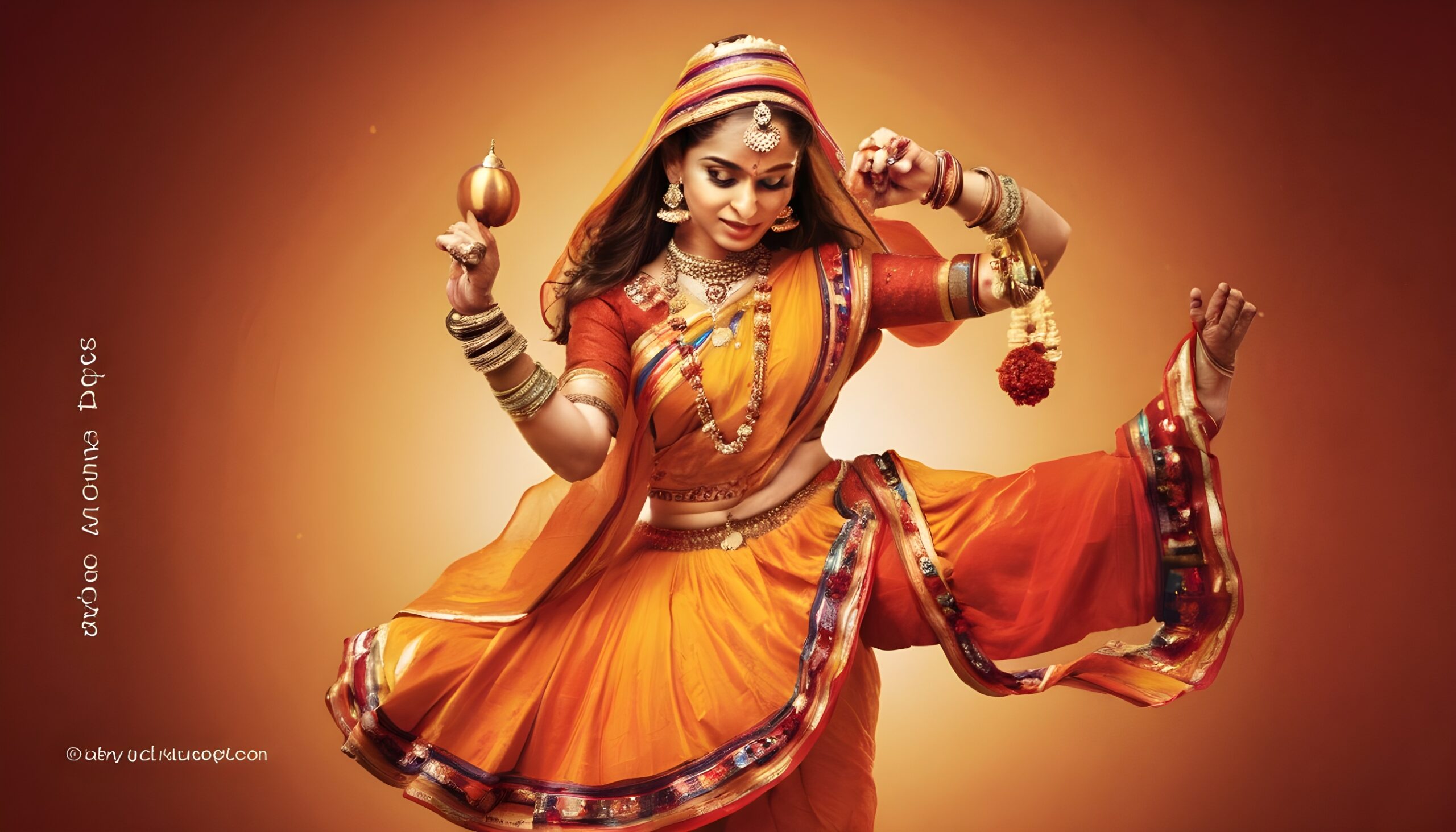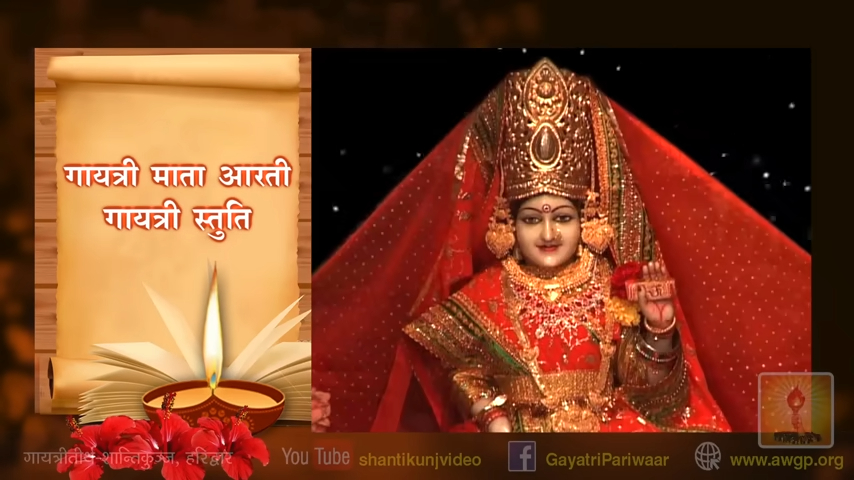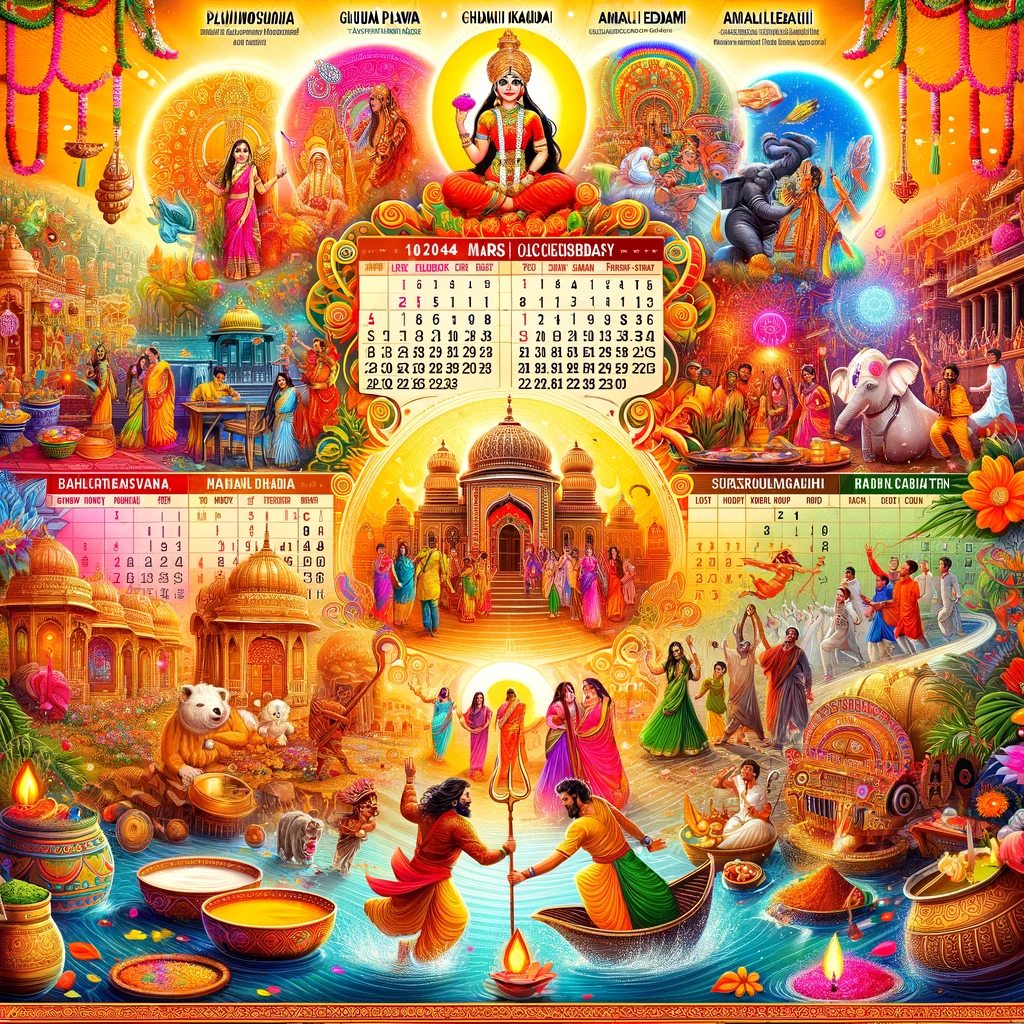
Navaratri festival extends for nine days, which represent nine manifestations of the goddess Durga popularly called ‘Navadurga.’ Both forms are reflection of different traits of the feminine divinity, and they symbolize courage, kindness, force, knowledge and affection, respectively. The passage from one day to the other is trying to depict a transformation from the physical evil grief and adversity and get to a spiritual deliverance and enlightenment.
Each day of Navaratri corresponds to a specific form of Durga:
Shailaputri: The daughter of the mountains, she symbolizes strength and loyalty.
Brahmacharini: Having been associated with prayers and average looks, she is the most intelligent.
Chandraghanta: The goddess of peace or non-violence, with a small brightly shaped moon on her forehead.
Kushmanda: The lord who created all what we see as the universe together with light and energy.
Skandamata: Despite being indestructible herself, she represents love and compassion which is needed by Kartikeya being his mother.
Katyayani: It is a warrior goddess who symbolizes the aspects of fight and triumph.
Kalaratri: The gracefully violent form of Goddess Durga who vanquishes the negative and dispels ignorance.
Mahagauri: She is one who transforms and is the goddess of purity and calmness.
Siddhidatri:She is known as the deity of success and victory, who provides intelligence and victory.
These nine days are an attempt to capture the odyssey many of us have to shed all darkness within ourselves, ignorance Overcoming, in order to realize the true Self. Devotees are over the years expected to be spiritually charged or transformed by the end of the Navaratri where the goddess is expected to have blessed the devotee.
Siddhidatri as the Deity of the Ninth Day of Navaratri
The 9th day of Navaratri is popularly called the ‘Siddhi Ratri’ because Devi Durga blesses her devotees in the form of Siddhidatri on this day. Siddhi is usually interpreted as “perfection” or “accomplishment” while Dhatri means “giver”. Siddhidatri is (popularly known as Vimla/ Kamala/ Varahi) who is considered to offer all the types of Siddhis or the supernatural and spiritual perfections. She becomes worshipped not only by interceders but also by gods, demons, and other celestial powers since this dreadful grace defines a paragon of the debt of divine enlightenment.
There are various forms in which Siddhidatri is illustrated that include sitting on lotus or on a lion and embracing discus, conch, mace and lotus. She is worshipped as the provider of supernatural powers and as the goddess who is believed to have brought about the creation of the universe and its annihilation. She was said to have given Lord Shiva the power to incarnate Ardhanarishvara, which means the merger of the man and the woman in the universe.
Siddhi Ratri, which comes on the ninth day, is considered propitious for spiritual rituals. This form of the goddess when worshipped is supposed to bestow spiritual enlightenment. It is the tenth day of Navaratri and the final day of celebration where devotees focus on the journey that they have done and pray to the goddess for success, knowledge and wealth.
Prayers and Rituals during Navaratri
The Navaratri festival is highly devoted, and the activities associated with the festival differ according to tradition. However, the essence remains the same: calling upon the power of the Goddess and asking her to bless and inspire us. Some of the common practices include:
Kalash Sthapana (Ghatasthapana): On the first day the clay pot is placed and water is poured into it representing the universe. A coconut is then placed on the top and this pot is worshied for 9 days as a symbol of the goddess.
Fasting: During Navaratri, most of the believers remain on fasts and eat only fruits, milk and select grains. The fast is performed so that the chakra within a person can be cleared, thereby enhancing receptiveness to the goddess’s vibrations.
Daily Prayers and Aarti: Lovers do offer flowers to the goddess, incense and food items daily. During this period, there are standard practices like chanting of mantras, singing of devotional hymns including the Durga Saptashati which comprises seven hundred verses in praise of the goddess.
Garba and Dandiya: On Navaratri, people in Gujarat and other states of India dance using their hands and legs while paying obeisance to the goddess through Garba and Dandiya. These dances are lively and involve expressions about happiness and the spirit of living.
Kanya Puja:At the end, on the eighth or the ninth day, the young girls in the neighborhood in honor of Durga are invited to the household and they are prayed for and offered food and gifts in the guise of nine forms of Durga.
Ramlila and Dussehra: In North India Ramilia is performed during Navaratri, a series of acts from Ramayana, the effigy of Ravana is burnt on the tenth day which is called Dussehra, the victory of good over evil.
Worshipping Goddesses
First Three Days (Durga): In the first three days, people offer their prayers to Durga, the goddess of strength or power. These days beliefs aim at restraining themselves and fighting against the inner evil. The goddess is revered as a warrior who fights the adversaries.
Next Three Days (Lakshmi): The next three days are dedicated to Goddess Lakshmi who is the goddess of wealth, prosperity and good health. People go to seek her blessings for both financial and spiritual blessings. This is the right time for the growth of outside as well inside the fortune, being pure and doing proper things.
Final Three Days (Saraswati):The three final days are for Saraswati, the goddess of learning, music and learning. These days symbolize knowledge, imagination and the qualities of enlightening life. They seek for intelligence as well as for the guidance to overcome the currents of life with patience and enlightened minds.







